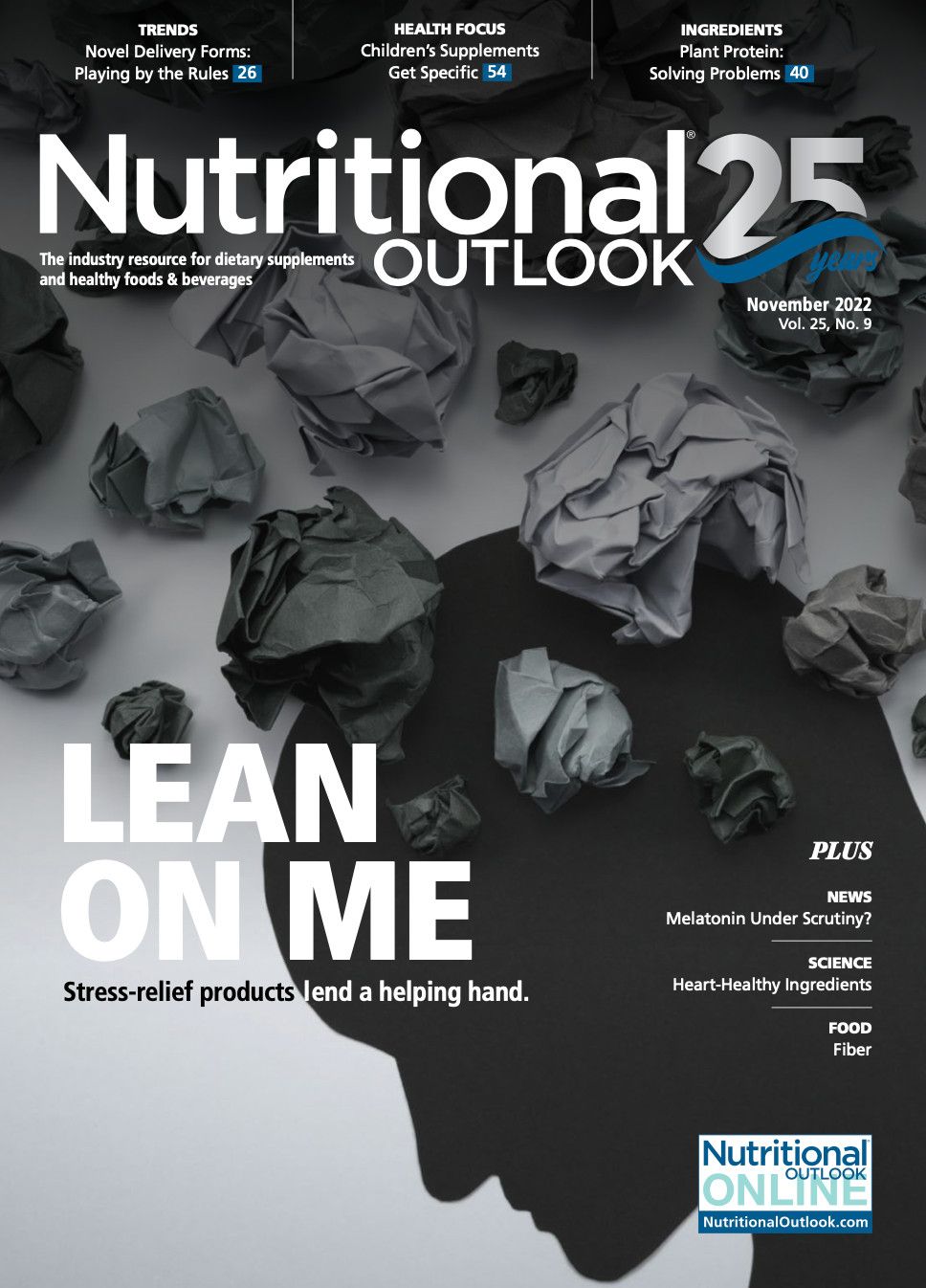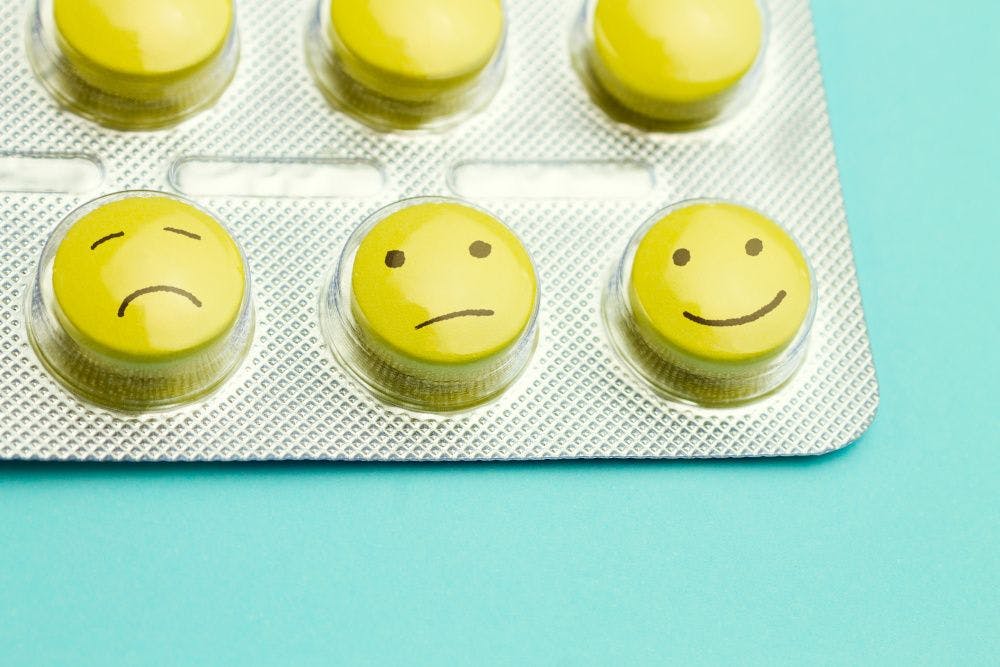Stay in your lane: Novel delivery systems must comply with supplement regulations
Supplement companies are branching out into novel delivery formats, but their number-one goal should still be to stick within the bounds of supplement regulations.
Sometimes television shows reflect culture before that culture exists. The Jetsons, the ahead-of-its-time animated television sitcom launched in 1962, was amazingly accurate in so many of its story details of what life would look like in the future—that future being 2062. Phone calls were conducted via video screen. Living rooms were cleaned with the push of a button (Hello, Roomba!). Even flat-screen TVs, toy drones, and smart watches were part of everyday life.1
But there is at least one prediction that seems off-base: how we consume our nutrients. For the Jetsons, actual food was reduced to small pills2 that somehow were as tasty as real food. Although we’ve still got many years before we get to the future the Jetsons were living in, when we compare the reality of our nutrient delivery methods to theirs, The Jetsons may have missed its mark.
In today’s reality, not only does it look like no one is aching to put aside an apple pie for an apple pie pill, but when it comes to obtaining even supplemental nutrients, consumers are slowly moving away from swallowing pills and tablets in favor of nutrient delivery systems in forms closer to the foods we crave.
Wilson Lau is best known in the nutraceuticals industry for his role with Nuherbs (San Leandro, CA), his family’s Chinese herb importer and ingredient company founded by his grandmother, Dr. Bing Yin Lee. As president, Lau is the third generation to lead the company. When he envisions the future for the industry, Lau says he believes that functional foods will be the most popular supplement delivery format. “We are going to see a combination of food and supplements where the supplements are being combined with the things we eat on a daily basis,” he predicts.
Swapping Pills for a More Enjoyable Experience
Even in today’s market, there is belief in some industry circles, backed by some research, that swallowing supplements in pill or tablet or capsule form does not hold the same appeal that it once did.
For example, Marc van Maris, senior vice president of marketing and sales for the U.S. market at Vitux AS (Oslo, Norway), says his company sees data demonstrating that consumers are moving away from pills and tablets in favor of alternative delivery systems.
The reasons why aren’t hard to imagine. In fact, van Maris believes that the impetus for the shift seems pretty straightforward. “Consumers are getting tired of pills and want a more fun and enjoyable experience when taking their supplements,” he explains. “Some of the shift seems to be generational as new consumers to the category are exposed to the wide range of delivery options,” he adds, reminding us that 20-30 years ago, pills, tablets, and capsules were more or less the only option.
Lau concurs with that premise. “If you look at Nutrition Business Journal and other research data,” he claims, “it shows that people have pill fatigue. Another way you can validate this is [by looking at] the growth of gummies.”
He also agrees with van Maris that there is a generational component to the shift. “People, especially those who are older, have to take a lot of solid-dosage items, whether it is supplements or medication,” notes Lau. On the other hand, he observes that “the younger demographic associates capsules and tablets with medicine—and they want wellness, not pharmaceuticals, to feel and perform better.”
Keeping It Familial
In fact, Lau is so intrigued by the prospect of alternative delivery methods for herbal ingredients that—buoyed by the innovative, available technology for those methods—he launched NuTraditions, a finished-product company to complement his family’s ingredient and extract company Nuherbs.
From a marketing perspective, the story goes that after suffering from a sleepless night (probably more than one!) thanks to his restless toddler, Lau, NuTraditions’ CEO, came up with the idea for two new products, the first in the NuTraditions portfolio, launched in 2021. According to the company’s press release, “the products were created to deliver a good night’s sleep and adaptogen-fueled energy to get through the day.”3,4
Hello Dreams strips, one of the new products, utilizes melatonin to help people fall asleep and time-tested herbs to help them sleep longer and sleep well. Good Morning Sunshine coffee pods, although not marketed as dietary supplements, combine either Colombian or Guatemalan fair-trade coffee infused with organic red ginseng, a traditional adaptogen that “is known to fight fatigue and provide immune support,” the firm says.3,4
Lau advises that pill fatigue was a factor in launching both products. “But,” he says, “just as important, or even more important, is how to meet the customer’s needs in the most accessible manner.” For example, when it comes to sleep and relaxation, Lau notes that people want something fast-acting, something they can take when they are ready for bed, not hours before. “So, we launched [Hello Dreams] in a convenient, fast-acting oral strip and had to figure out how to fit everything in such a small footprint and still be effective.”
From a technology perspective, Lau explains, “Our know-how and extensive partnerships at Nuherbs enabled us to launch [in 2017] Nuherbs Bespoke Extracts5, where we worked with clients on their product innovations by developing ingredients that are fit for purpose in their desired delivery format.” He continues: “It started off as simply wanting to offer a last-mile solution for organic certification by developing these custom organic extracts to fill in the ingredient gaps, and it became the ability to ultra-customize extracts. That capability was essential for making the sleep strips and coffee pods effective.” Customer response to both products “has been great,” Lau reports. Specifically, with Hello Dreams, he says, “People are really loving how quickly it works.”
The longer the products are on the market, he adds, the more “new-use cases” he discovers. As an example, Lau says one of the more surprising use cases was among people who don’t have issues falling asleep but who have trouble staying asleep. “They keep [the product] on their bedside [table] and take one when they wake up to quickly fall back asleep.”
Moving Beyond Pills
Craig Sheehan, chief commercial officer at Guardion Health Sciences (San Diego, CA), discusses the non-pill movement. “The shift from pills and tablets to confection-inspired technologies began more than 20 years ago with the introduction of soft-chew technology in the calcium segment.” He explains that ”calcium pills were very large and hard to swallow, so this technology was a breakthrough that made calcium enjoyable and easy to take.” Over the past 10 years, Sheehan states, “this same consumer insight led to the explosion of the gummy dosage form in nearly every segment in the supplement category.”
Guardion Health Sciences, a clinical nutrition and diagnostics company that develops clinically supported nutrition, medical foods, and supplements, purchased Adare Pharmaceuticals in 2021, including Adare’s popular Viactiv brand of supplement chews.6 In a company press release, Guardion’s President and CEO Bret Scholtes stated that Viactiv “has an established brand and presence from which we can significantly expand our capabilities in terms of marketing, product lines, and new distribution channels.”6
Guardion wasted no time in expanding the Viactiv product line as promised with the launch of Viactiv Omega Boost gel bites earlier this year. The 1,200-mg omega-3 gel bites are designed to provide total-body support, including cardiovascular, brain, joint, and eye health.7
Sheehan doesn’t discount the popularity of gummies, but at the same time he recognizes that the delivery method may have some limitations. “Although gummies work well across many nutritional ingredients, limitations in active-ingredient loading can be a challenge in some areas,” he says, omega-3s being one of them.
“The omega-3/fish oil segment is very underdeveloped in gummies due to taste issues and the inability to deliver clinically effective dosage levels, which can often exceed 1,000 mg,” notes Sheehan. And that’s one reason why moving beyond gummies may be an important breakthrough. “New technologies, such as the gel bite, now make it possible to overcome these challenges,” Sheehan adds.
Scholtes called the Omega Boost product “…an exciting addition to our Viactiv line as it introduces a new dosage form that addresses a gap in the omega-3 market: clinically proven levels of omega-3 in an easy-to-take, great-tasting product that you will look forward to taking every day.”7
It also wasn’t long before Guardion had new science to share about the Viactiv Omega Boost gel bites. In a press release announcing interim four-week results of a clinical study designed to test the effectiveness of the product on increasing omega-3 saturation levels of red blood cells, the company shared the news that there was a 51% increase in the Omega-3 Index (O3I) in that short time frame. The O3I is a test methodology from OmegaQuant.8
The encouraging results exceeded the company’s expectations, Scholtes said. “The amount of high-quality omega-3s in a supplement does matter, and this product reflects Guardion’s continuing commitment to deliver science-based, clinically supported product[s] that can make a difference in the health of our customers.”8
In other new product news, a little over a year ago Nature’s Bounty launched an innovative line of “jelly bean vitamins.” The fruit-flavored, six-product line of Nature’s Bounty Jelly Bean Vitamins is available for adults (four products) and kids (two products) and offers a “tasty, fruit-flavored jelly bean format [that] provides an enjoyable and convenient way to get your daily dose of wellness.”9
The adult vitamins include Immune Jelly Beans with vitamins C and D and zinc in an orange flavor; Sleep Jelly Beans made with melatonin; Multi Jelly Beans, a multivitamin that provides whole-body health support via essential vitamins plus zinc in a strawberry-lemonade flavor; and cherry-flavored Energy Jelly Beans with vitamin B12 to convert food into cellular energy. The jelly bean line for kids includes a multivitamin and an immune-support product. The product line is vegetarian, gelatin free, and free of artificial flavors or sweeteners.
“Nature’s Bounty is committed to creating nutritional supplements that support overall health and make wellness routines more enjoyable,” said Aileen Stocks, president of wellness brands for The Bountiful Company, in a press release.9
Let’s Talk Technology
New delivery systems don’t happen overnight. Vitux AS, one company leading the move beyond gummies, launched its innovative, patented ConCordix Smart Chews delivery system in the market over a decade ago. Van Maris advises that smart-chew penetration in the U.S. market expanded significantly in the last four years. For example, Amway uses the ConCordix format for its Nutrilite Brainiums DHA Jelly Splat product, says van Maris. ConCordix is also found in the ChildLife Essentials product line as well as in SFI Health’s Equazen Pro. The Equazen Pro product is currently in more than 4,200 CVS locations across the U.S., he says.
It’s the advanced technology that allows product improvements in a number of areas and gives manufacturers scientific—and marketing—advantages in creating new ways for consumers to take their supplements. Calling the ConCordix Smart Chew technology a “true innovation in delivering dietary supplements to consumers,” van Maris says the delivery system “effectively addresses the consumer’s need for a healthier, sugar-free chewable alternative delivery format that contains clinically relevant dosages combined with higher bioavailability.”
The ConCordix technology “can combine fat-soluble and water-soluble nutrients in one Smart Chew,” van Maris explains, “providing unique formulation opportunities over conventional gummies and even softgels for desirables such as omega-3s and algal oil, CoQ10, vitamin D3, vitamin B, etc.” He adds that the technology allows for the fish-based and plant-based omega-3 options to provide “reflux-free, no-burp experiences” for those who take them.
Guardion’s Viactiv Omega Boost gel bites also use the ConCordix technology, Sheehan says. He explains that “the gel bite is a gelled emulsification technology which allows for high concentrations of oil-based actives, while masking the taste.” Van Maris adds that it’s the patented emulsification technology “which allows us to combine fat- and water-soluble nutrients in a stable platform. Unlike gummies, which are just a confectionery with a sprinkling of nutrients,” he says, the ConCordix delivery system is “designed to integrate clinically relevant dosages of nutrients into our all-natural chewable system.”
Even the “unique aluminum blister packaging” adds benefit, according to van Maris, “guaranteeing stability of the ingredients during the 24-month shelf life of the product.” Sheehan agrees and says that Viactiv Omega Boost gel bites “use blister packaging to preserve the freshness of every piece and also have a remarkably soft and smooth texture, with a light fruity flavor, no fishy flavor, and no sugar—despite holding more than 10 times more omega-3s than the leading gummies.” He adds that “the consumer experience, from packaging to product, is very different than [for] a gummy.”
ConCordix technology does have some limitations related to solubility and production, says van Maris. “Fat or water solubility is critical to the formulation of our emulsion and production, and some nutrients like calcium and magnesium are not possible at this time,” he advises.
Not only is van Maris practical about the benefits of the ConCordix technology; he is also philosophical. “From my perspective, the most difficult thing to do is to get someone to change a habit that is ingrained through years of repetition,” he says. “We are mirroring the structure of food by creating billions of small, oily droplets in the ConCordix Smart Chews. These droplets increase the contact surface in the intestines and lead to a higher degree of absorption of ingredients when compared to softgels.”
Clearly proud to be representing the company’s Smart Chews delivery system, van Maris can’t resist sharing one more lyrical thought. Calling the ConCordix technology “both innovative as it is simplistic,” he adds that “it is looking to nature and the design of food and of our digestive system to help inspire, starting with the original blueprint, if you will.”
NuTraditions’ Lau says that it’s technology, but especially lab-scale technology, that “allows us to rapidly [create] ideas and concepts, because you need real world-samples to work with to ensure things work the way you imagine that they will.”
With both novel and traditional delivery systems, there are many challenges along the way, and it’s important to pick the right manufacturing partner during the endeavor. Lau likes the precision of being able to tinker to make it all come together.
“For oral strips, it is easy if the required efficacious dose is low, such as [for] melatonin,” says Lau. He explains that “if you are seeking to deliver 3-5 mg of melatonin, depending on your label claim, almost any oral strip manufacturer can do it. However, if you want to fit the equivalent of 3 g in a small footprint, then it’s extremely hard to do so. It’s a question of knowing the ingredient and formula profile.”
For some ingredients and formulations, it is just not possible. For instance, Lau says that “if the formula contains minerals, as some Traditional Chinese Formulas do, it’s impossible to concentrate it to such a degree.”
Another example from Lau revolves around making a beverage targeting immunity. In that case he says, “Well, I can make a water-soluble Echinacea purpurea aerial part extract, but it would be so bitter that no one would buy that beverage. The variables that one has to account for increase quite substantially when you move from solid dosage format.”
Beyond Gummies?
So where does all of this leave gummies?
Van Maris says the ConCordix technology represents a clear evolution of the chewables category. “Since their introduction, gummies as a category have lacked a true innovation curve simply because of the inherent limitations of the basic format. Gummies are a confectionery platform to which nutrition is ‘bolted on,’” he says, “whereas ConCordix’s patented emulsification technology creates the range of nutritional and ease-of-delivery benefits for marketers to leverage.”
But let’s face it: no one expects companies manufacturing and marketing gummies to just let their category lead simply melt away. Gummies are still a fast-growing category, valued worldwide in 2020 at just short of $6 billion with a CAGR of 12.5% and projected to reach $10.6 billion by 2025.10
With companies such as Church & Dwight, Olly, Nestlé, and Nature’s Way leading the gummies market, gummies have a strong foothold in the dietary supplements space. In October, another food and beverage industry giant entered the gummy game.
Gatorade, a division of PepsiCo, launched two new gummy supplements for athletes, complete with a technology twist. Gatorade Recovery and Gatorade Immune Support were developed with scientists from the Gatorade Sports Science Institute. The Gatorade Recovery gummies feature tart cherry powder and vitamin D, while the citrus-flavored Gatorade Immune Support gummies include vitamin C, zinc, selenium, and vitamin D.
Commenting on the release of the Gatorade gummies, one reporter from a food publication alluded to the popularity of the gummy delivery system. Christopher Doering, senior reporter at FoodDive, wrote, “Gatorade could have easily put these product attributes into its beverages, but by embracing gummies the company is recognizing that people, and those exercising in particular, are on the go. Most people don’t want or have the ability to carry around multiple bottles of Gatorade. Gummies are lighter and more convenient.”11
The technology twist is not specifically connected with the gummies’ product drop, except for the timing. It does, however, represent growing consumer interest in technology and personalization. The Gatorade gummies’ introduction coincided with the launch of a “connected experience” in the form of a Gatorade Smart Gx bottle that “encourages hydration with intelligent reminders that are triggered by sensors located within the bottle’s cap that detect the level of liquid inside the bottle,” according to a press release from impacX, innovator of the patented smart-cap technology. The smart bottle connects to an upgraded version of the Gatorade Gx app where consumers can track and improve their hydration data.12,13
“We have been searching for an innovative technology company to partner with that can deliver personalized daily hydration recommendations and change the way athletes hydrate and fuel,” said Drew Palin, senior director of innovation at Gatorade, in a press release. “ImpacX has created a smart packaging technology that precisely meets our needs. This new partnership represents the future of packaging and has the potential to improve athlete engagement,” he added.12
Potential Consequences of Ignoring Regulation
While new and alternative delivery systems aren’t likely to be a direct threat, at least yet, to gummies a bigger threat may come from some companies’ ignorance—willful or purposeful—of dietary supplement regulations.
NuTraditions’ Lau subscribes to the theory that “just because you can dream it doesn’t mean it’s legal to be marketed as a supplement.” Or, he says, you may have to jump through additional hoops to do so.
Lau’s not against the extra work. He says, “when you work with novel delivery systems, having a strong regulatory presence in product development is essential because we have to comply with all the applicable regulations.”
However, Lau is also clear that some products using alternative delivery systems just are not legal dietary supplements. “I will give you a sample that is quite clear: patches,” he says.
Asa Waldstein is a veteran dietary supplement executive with 20 years of experience in the industry. He is also principal of the Supplement Advisory Group, a boutique firm focusing on marketing risk analysis and practical marketing solutions for the web and social media.14
Waldstein is very clear about the illegality of skin patches marketed as dietary supplements. “The FDA’s definition of a dietary supplement states that a product must be ingested to be considered a compliant supplement,” he says. “Skin patches or creams that transdermally deliver ingredients into the skin are classified as drugs.”
He’s almost seen it all when it comes to companies mishandling dietary supplement regulations. “Over the years, I’ve seen numerous noncompliant products, such as topicals or inhalants, labeled with a Supplement Facts panel,” Waldstein observes. “These are clear red flags to regulators that the companies manufacturing and distributing [the products] do not understand the basics of labeling compliance.”
Waldstein warns that those blatant mistakes—like bulls to the matador’s red flags—usually trigger a deeper, more detailed dive from the regulatory authorities. He advises that “there have even been some FDA warning letters against companies adding nutraceutical ingredients into vapes, then claiming product benefits if a consumer smokes them.”
Waldstein claims that the common adage “Where there’s smoke, there’s fire” is usually true when it comes to products being grossly misbranded, such as labeling a vape as a supplement.
Some of these—hopefully—rookie mistakes could be avoided if companies entering the market with novel delivery methods consulted a regulatory consultant or even signed up for Waldstein’s complimentary “Warning Letter Wednesday” newsletter15 or participated in “Asa’s Regulatory Education Series,” a free educational platform focusing on GMP compliance, enforcement trends, and marketing tips for the supplement and hemp industries.16
“Developing a relationship with a regulatory specialist is always a good idea,” Waldstein says. “These experts can be utilized to help uncover risks in areas companies may not have even thought about.” As examples, he shares that if a customer posted about sublingual delivery on a company’s social media wall, and the company gave it a like or a thumbs-up, this would be fair game for enforcement. “The same goes for hashtags,” he adds, “whereas #sublingual could tip the scale to receiving an FDA warning letter.”
Waldstein understands special nuances that help guide marketing strategy. He’s familiar with regulatory gray areas, and throughout his career he’s witnessed an evolution of alternative delivery systems, even in his own thinking.
“When I first heard about nutraceutical gummies years ago, I thought, ‘There’s no way that is a supplement,’ but I am glad to have been proved wrong,” he observes. His point is this: although not explicitly noted in the regulations, products like gummies and jelly beans “seem to qualify as supplements if they are manufactured, labeled, and marketed correctly.”
Waldstein explains that “the industry continues to evolve as long as certain guardrails are not crossed, and the FDA seems to allow these types of innovations to continue.”
With all regulation, there is what’s known as the “gray area,” that space where making simple mistakes might push you over the regulatory line. One such “gray area,” says Waldstein, is labeling. Marketing is another. “Based on their labeling, ‘gray area’ products can tip the scale into compliance or noncompliance,” he says.
For example, Waldstein notes that “labeling a product as ‘sublingual’ or ‘absorbs through the mucus membranes’ would turn it into a drug. On the other hand, labeling a product as ‘hold under the tongue before swallowing’ is more compliant, as the product is being swallowed, not absorbed.”
Last Thoughts
Looking forward at the alternative-delivery formats market, there’s one innovation that Lau would like to see incorporated: a commitment to sustainability, something that is important to both Nuherbs and NuTraditions. He believes that “product innovations and alternative delivery formats can and should also contribute to sustainability and the effort to reduce our industry’s carbon footprint and impact. This will be an interesting twist to product innovation in the future, especially when all the easy wins have been realized.”
For Guardion’s Sheehan, “The challenge with most dietary supplements is that there is no immediate signal that the product is doing anything for you, and any real health benefits require continued use over time. Pills are very passive; you don’t swallow them because you love it but because you feel you have to,” he says. ”New dosage forms like soft chews, gummies, and gel bites bring a level of enjoyment and satisfaction that more actively engage you to make the experience something you can look forward to taking each day—which we believe leads to increased compliance.”
References
- Walsh K. “12 Cool Technologies ‘The Jetsons’ Predicted for 2062 that We Have Right Now.” EmergingEdTech. Published November 5, 2019.
- Duan Noel. “Everything About Our Post-Apocalyptic Future Was Predicted on ‘The Jetsons.’” Quartz. Published January 4, 2018. Last updated July 20, 2022.
- Company press release. “Traditional Chinese Herb Supplier Launches NuTraditions Hello Dreams Sleep Strips and Good Morning Sunshine Coffee Pods in Natural Retail Channel.” Posted February 7, 2022.
- Grebow J. “Sleep Strips and Coffee Pods Mark Debut of NuTraditions Retail Line for Traditional Chinese Medicine Ingredients Supplier Nuherbs: Natural Products Expo West 2022 Preview.” Published February 16, 2022.
- Nuherbs website. “How We Make Bespoke Extracts.”
- Company press release. “Guardion Health Sciences Broadens Clinical Nutrition Product Offerings by Closing Acquisition of Activ Nutritional, Which Owns the Science Backed, Revenue-Generating Viactiv Product Line from Adare Pharmaceuticals.” Posted June 2, 2021.
- Company press release. “Guardion Health Sciences Launches New Viactiv Omega Boost Passion Fruit Flavored Gel Bites.” Posted February 14, 2022.
- Company press release. “Guardion Health Sciences Announces Clinical Results Indicating that Viactiv Omega Boost Gel Bites Increase Omega-3 Levels in Just Four Weeks.” Posted October 6, 2022.
- Company press release. “The Future of Wellness Tastes Great with New Nature’s Bounty Jelly Bean Vitamin Line.” Posted November 1, 2021.
- MarketsandMarkets report. “Gummy Vitamins Market by Product Type (Multivitamins, Single Vitamins), Source (Animal, Plant), Packaging Type (Bottles & Jars, Pouches), Distribution Channel (Store-Based, Online), End User (Adult, Children), and Region – Global Forecast to 2025.” Published October 2020.
- Doering C. “Gatorade Ventures into Gummies.” FoodDive. Published online October 19, 2022.
- Company press release. “impacX Partners with Gatorade to Introduce Revolutionary Smart Gx Bottle.” Posted October 13, 2022.
- Fairbrother L. “Gatorade Introduces New Smart Bottle and Gummies.” HypeBeast. Posted October 4, 2022.
- Supplement Advisory Group website
- “Warning Letter Wednesday” webpage
- Asa’s Regulatory Education Series. YouTube. Retrieved October 2022 from https://www.youtube.com/channel/UCO4ViN94xb5FlTJKkdTsJaA/videos

Prinova acquires Aplinova to further increase its footprint in Latin America
April 7th 2025Prinova has recently announced the acquisition of Brazilian ingredients distributor Aplinova, which is a provider of specialty ingredients for a range of market segments that include food, beverage, supplements, and personal care.





















